This post may contain affiliate links. Please read our disclosure policy.
Khao Piak Sen (Lao Tapioca Noodle Chicken Soup) – Lao style homemade tapioca noodle is served in aromatic chicken broth. Incredibly comforting and you will learn how to easily make this naturally gluten-free khao piak sen noodles at home too.
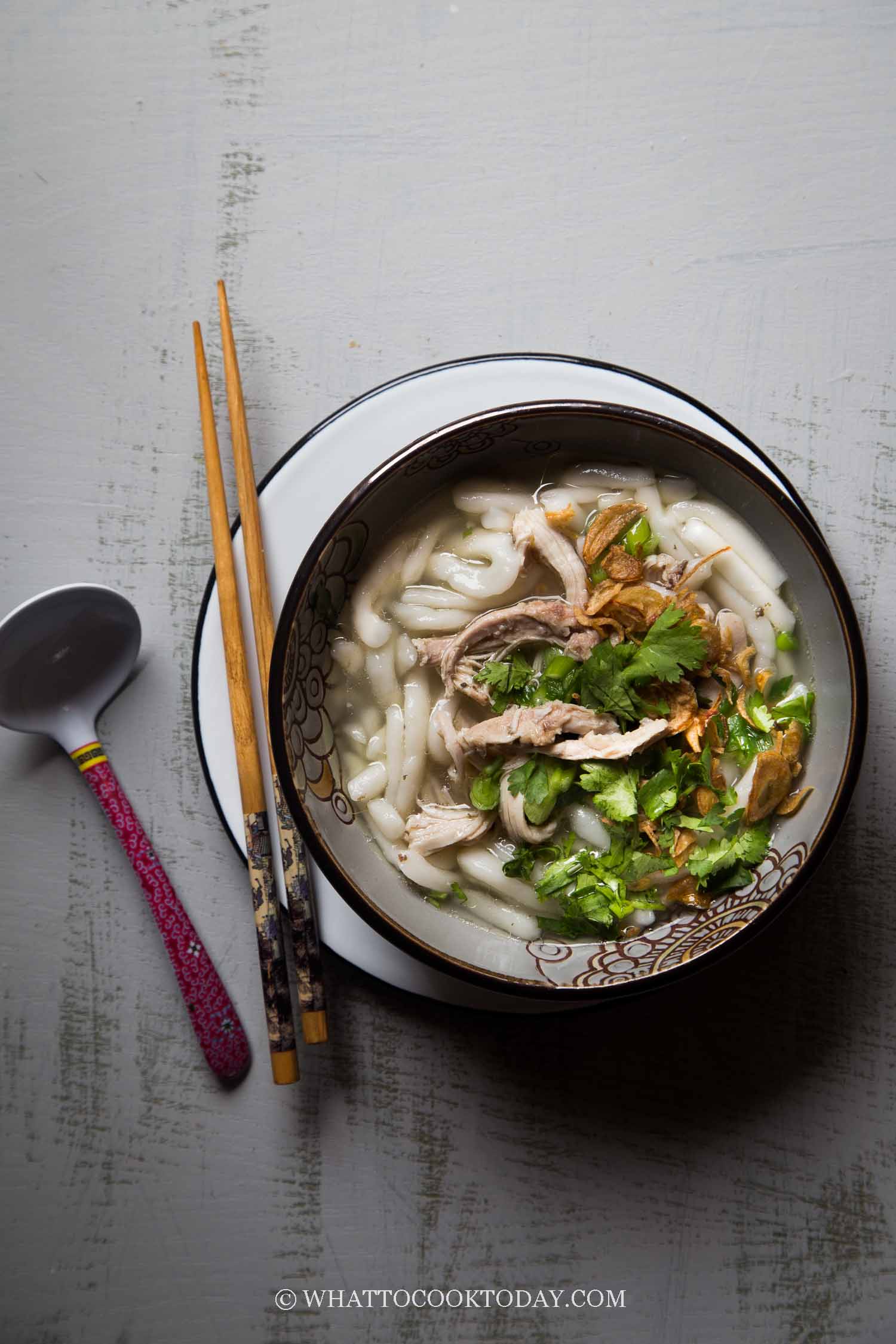
A visit to a Lao restaurant a few months ago got me obsessed with making my own khao piak sen. We didn’t know what to order at the restaurant. The waiter recommended khao piak sen and we obliged and did not regret it. The waiter told us the chef freshly make the tapioca noodles everyday. I experimented a lot to get the texture of the noodles right by playing with the rice flour and tapioca flour ratio. Before I go further into details on that, let’s get you acquainted with khao piak sen 😉
WHAT IS KHAO PIAK SEN?
Khao piak sen is lao style chicken noodle soup. It’s such a simple chicken soup served with udon-like soft and chewy tapioca noodles. Traditionally, the noodles are cooked directly in the chicken broth to give the broth its slightly thick starchy consistency.
HOW TO MAKE KHAO PIAK SEN NOODLES FROM SCRATCH SUCCESSFULLY
Khao piak sen noodles are made with only 3 ingredients: Rice flour (regular not the glutinous kind), tapioca flour, and hot boiling water. That’s all you need. It is commonly called tapioca noodle in English.
The most important thing in making good khao piak sen noodles are
1. The ratio of the flours. I’ve experimented with different rice to tapioca flour ratio and here’s what I found:
Rice:Tapioca flour ratio
1:1 = very starchy noodles and the texture is too soft and mushy
1:2 = The noodles are too chewy and tough
1: 1.5 = The noodles are soft, but still slightly chewy
1: 1.3 = The noodles are soft with the right balance of chewiness
This recipe uses 1: 1.3 ratio. I would say 1: 1.5 and 1: 1.3 ratios gives the best result for khao piak sen noodles
2. Hot boiling water
You can’t make this noodle with just warm water. You actually need hot boiling water. Why? When the water is not hot enough, the dough is not elastic and will crumble easily. The hot boiling water will make the flour becomes elastic and easy to work with. So remember, hot boiling water!
3. Use a pizza cutter
You can use a knife to cut too, but I love doing it with a pizza cutter. So much easier and faster. It’s a personal preference though, you can stick with using a knife if that’s what you are comfortable with.
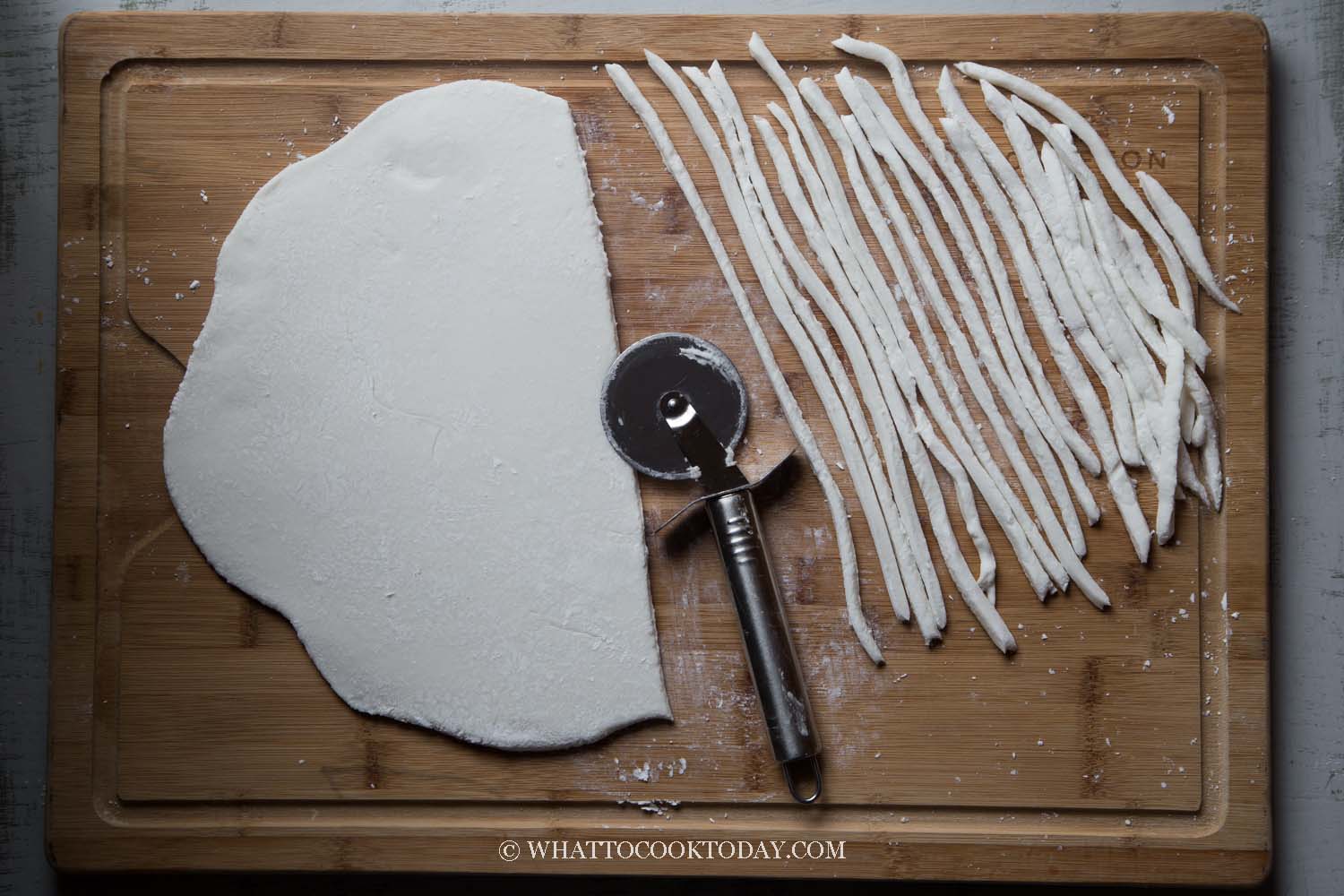
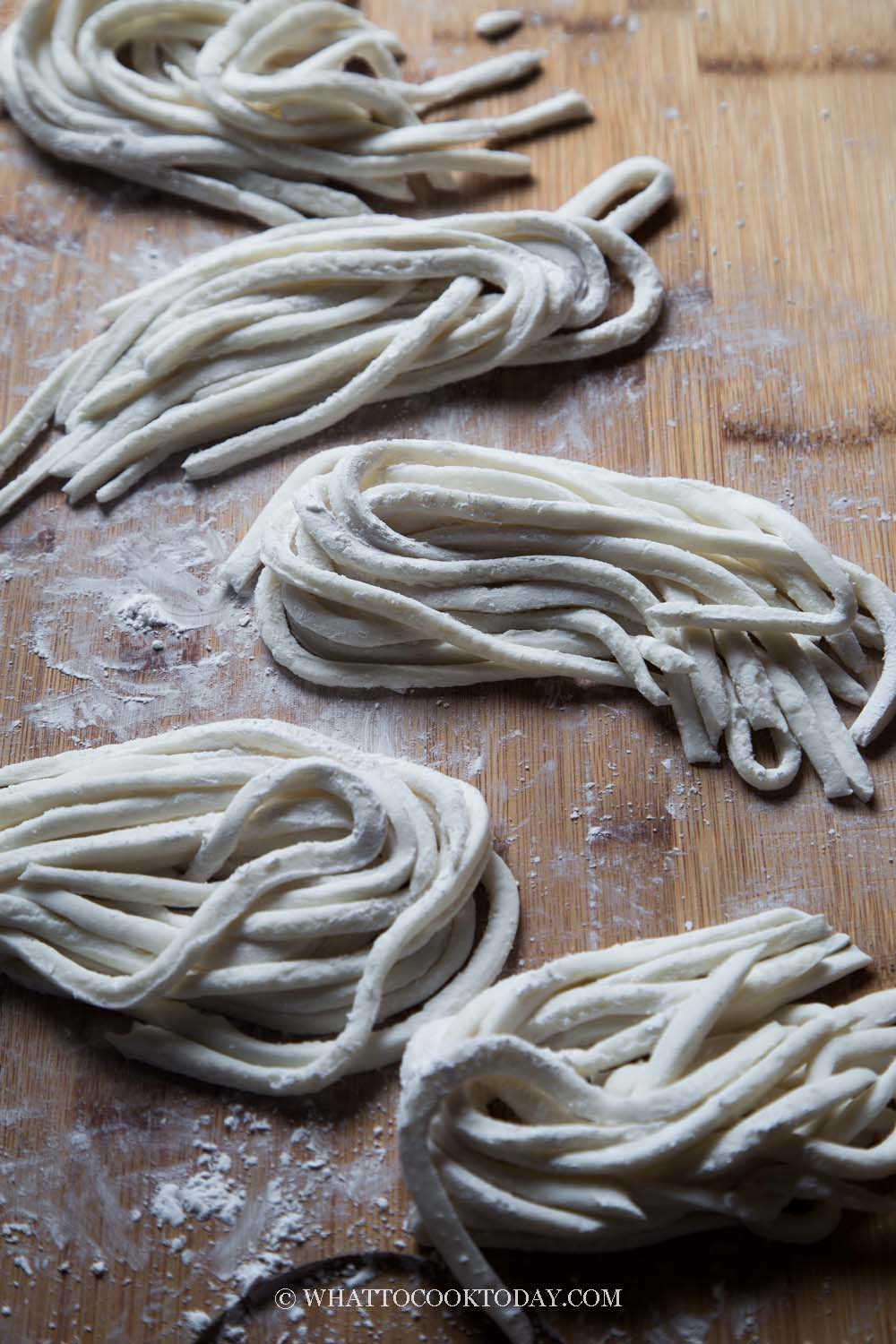
KHAO PIAK SEN NOODLES ARE NATURALLY GLUTEN-FREE
The noodles are made with a combination of rice and tapioca flour, which are naturally gluten-free. The recipe for the broth does call for a fish sauce, which is not gluten-free, but you can use vegan fish sauce to make this vegan-friendly.
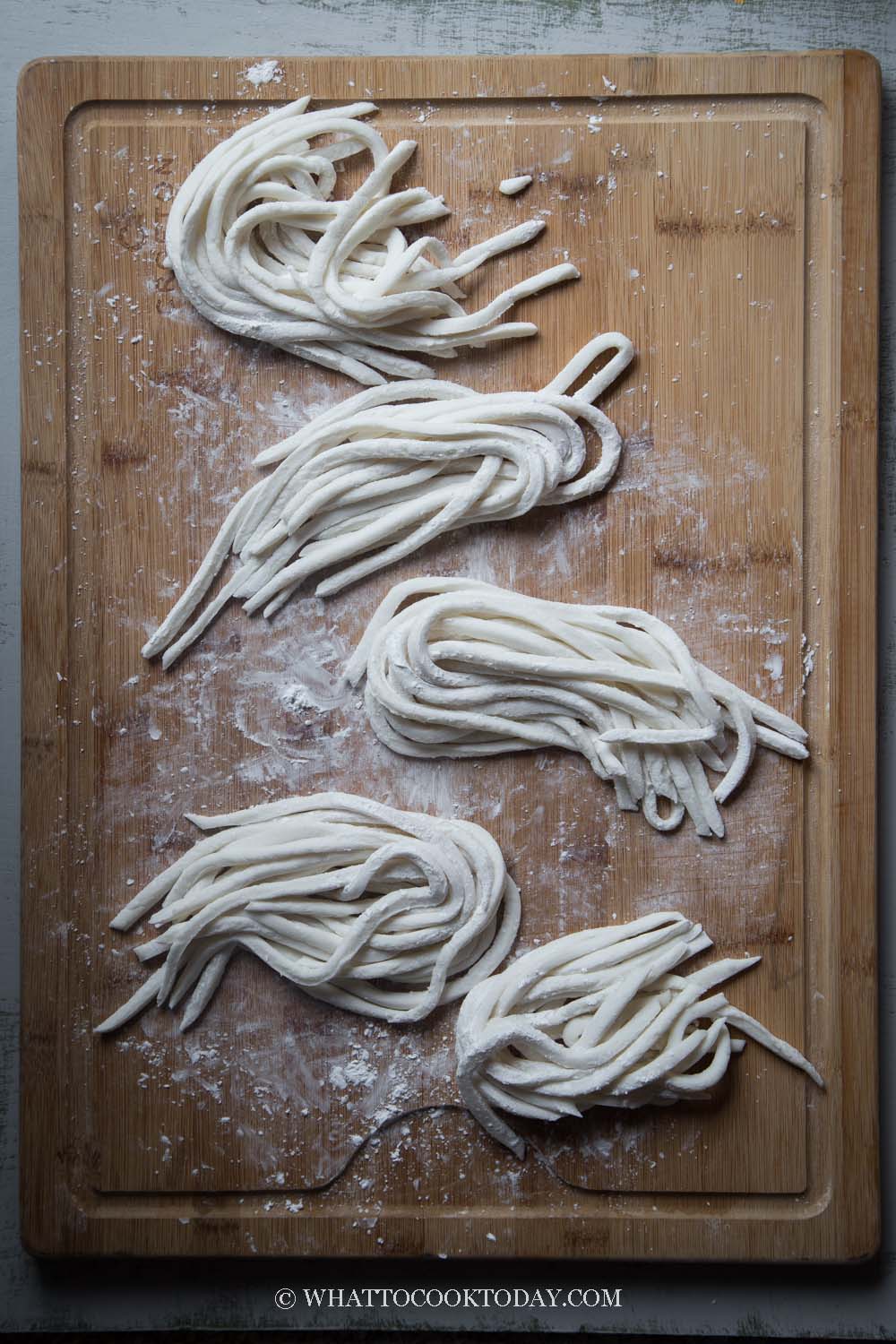
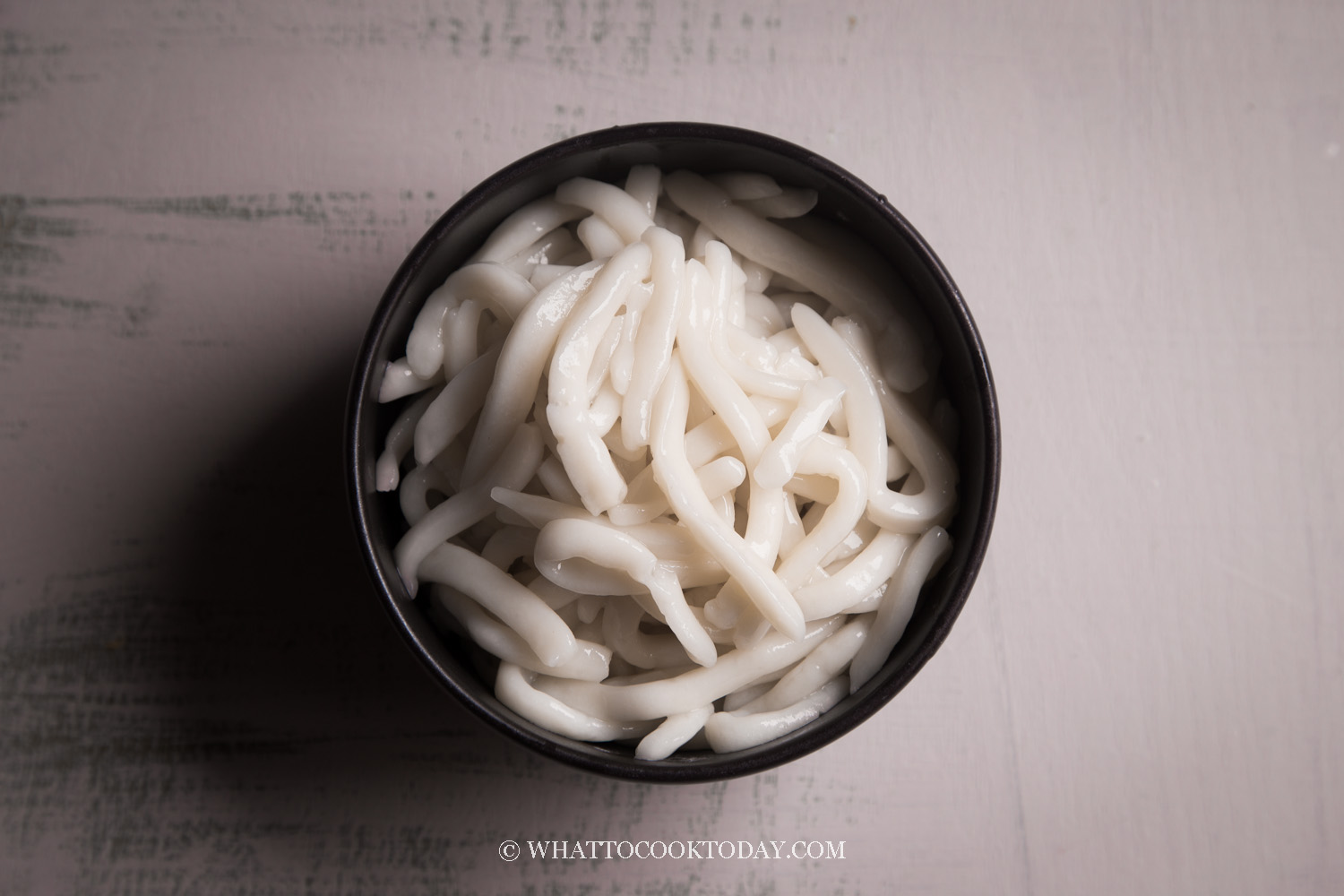
SPECIAL INGREDIENTS USED IN KHAO PIAK SEN
1. Rice flour
2. Tapioca flour
3. Fish sauce
4. Galangal powder
5. Lemongrass stalks or lemongrass powder
6. Kaffir Lime Leaves
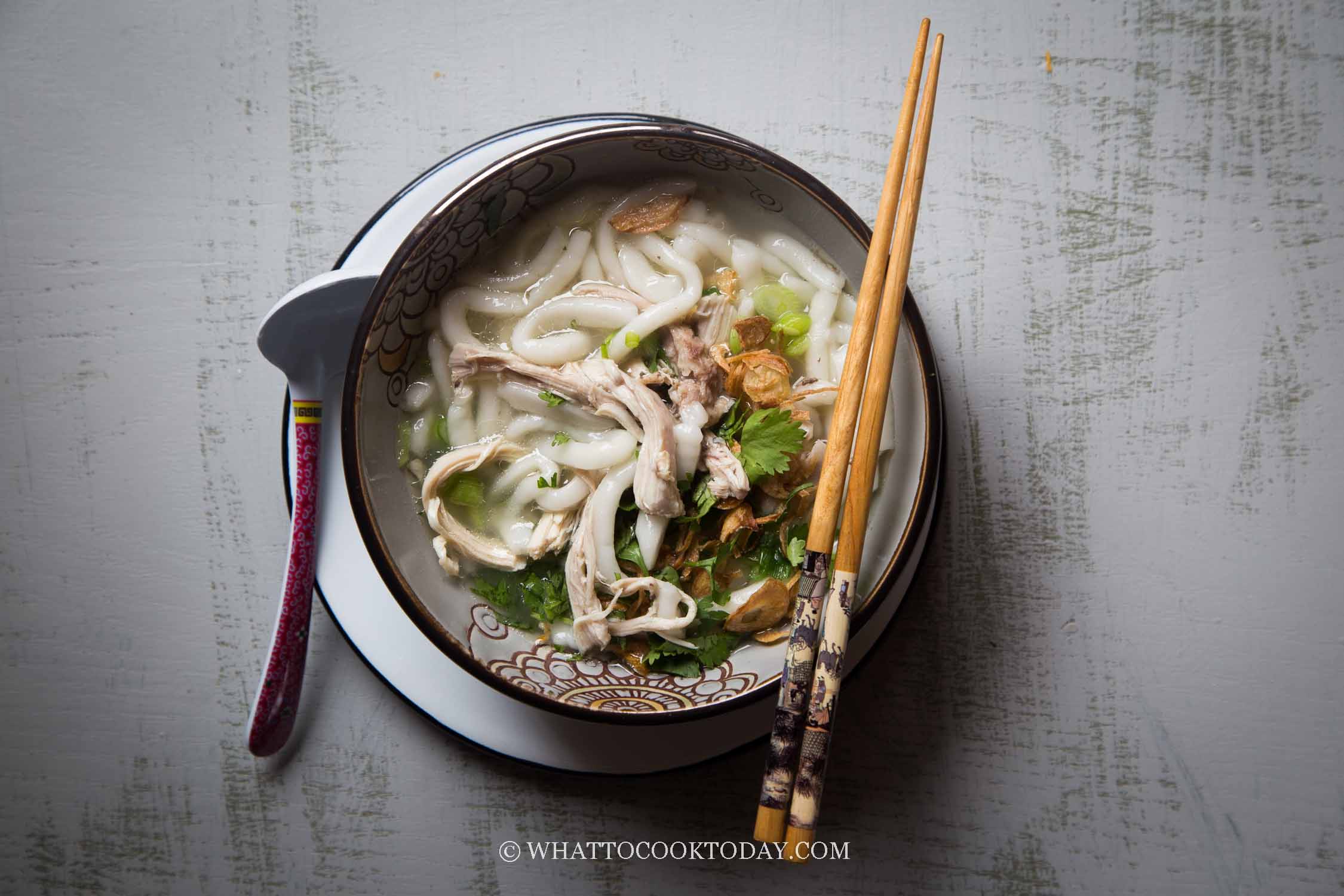
TIME-SAVING TIPS FOR MAKING KHAO PIAK SEN
Traditionally the soup is made with chicken bone, but I can tell you using a good-quality store-bought chicken bone broth makes equally delicious broth
MEAL PREP TIPS FOR KHAO PIAK SEN NOODLES AND BROTH
Storing noodles:
Portion the uncooked khao piak sen and place them in a freezer bag, kinda spread them flat on the bag and lay the freezer bag flat in the freezer. They can be frozen up to one month.
Storing the chicken broth:
The chicken broth can be portioned as well in containers or freezer bag. Make sure it has cooled down before storing. If using a freezer bag, lay them flat and they will save more space and reheat faster
Cooking:
When ready to cook, place the broth (without thawing) in a saucepan and bring to a boil. As for the noodles, you don’t need to thaw. Just bring the broth to a boil and put the noodles in and cook until the noodles turn slightly translucent and float to the top.
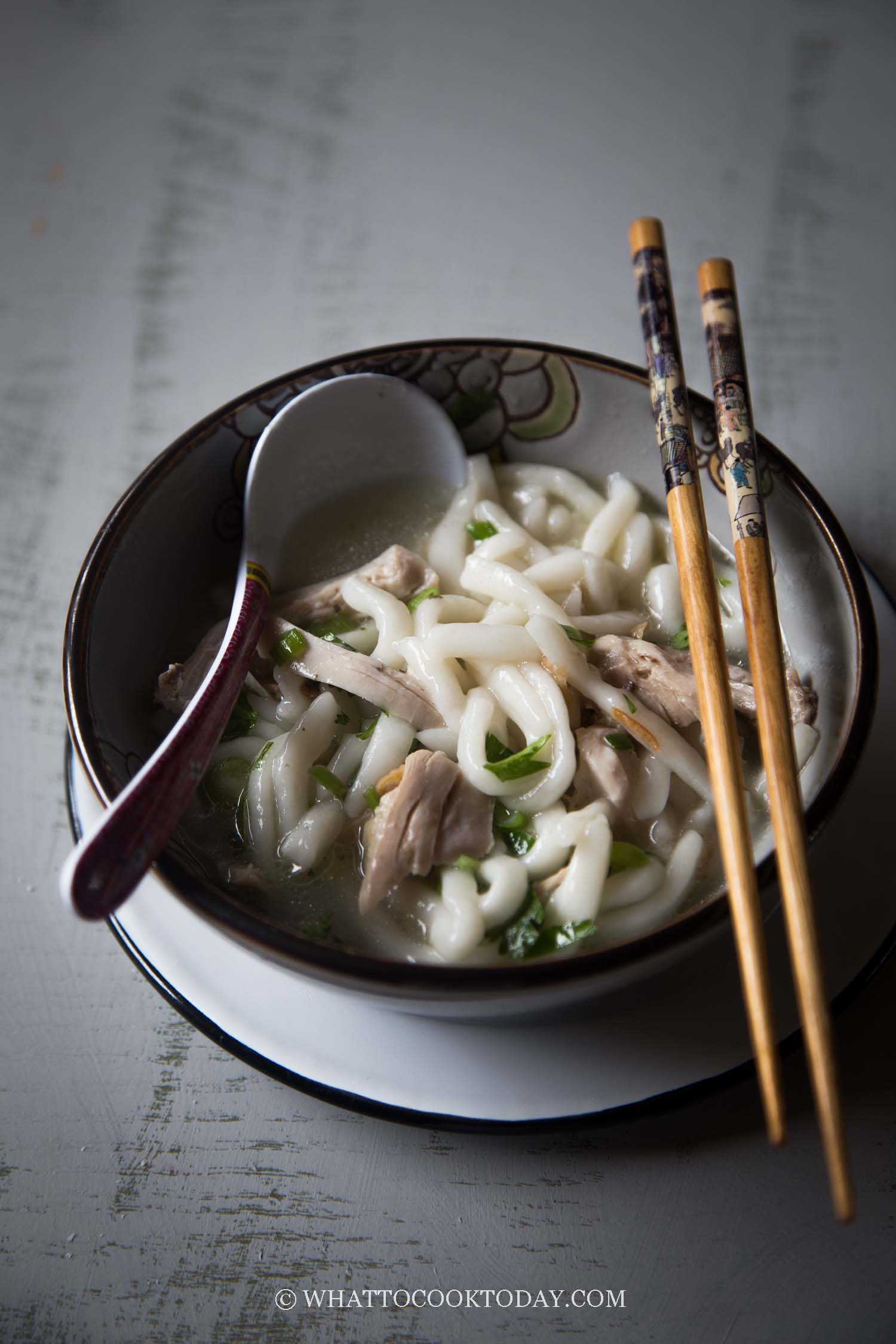
HOW TO STORE LEFTOVER NOODLES
COOKED NOODLES: Leftover cooked noodles can be stored in the fridge for a maximum of 5 days, I won’t go any longer. They will harden when refrigerated. Simply reheat them in hot boiling water briefly and they will soften again
UNCOOKED NOODLES: freshly-made noodles should NEVER be stored in the refrigerator. They will turn mushy and wet and stick to each other. However, you can freeze them by portioning them into serving size and spread them flat on the bag and lay the freezer bag flat in the freezer. They can be frozen up to one month.
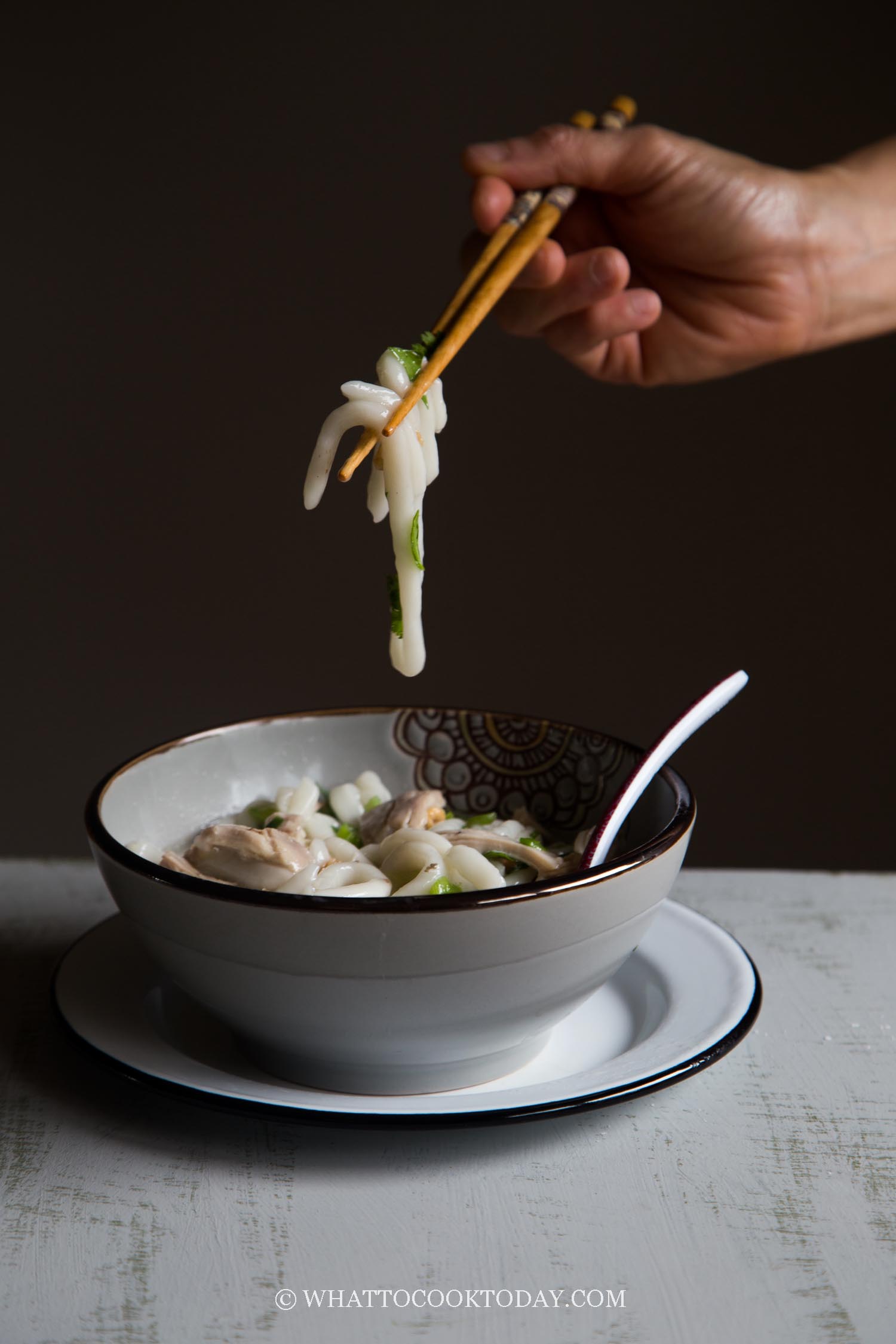
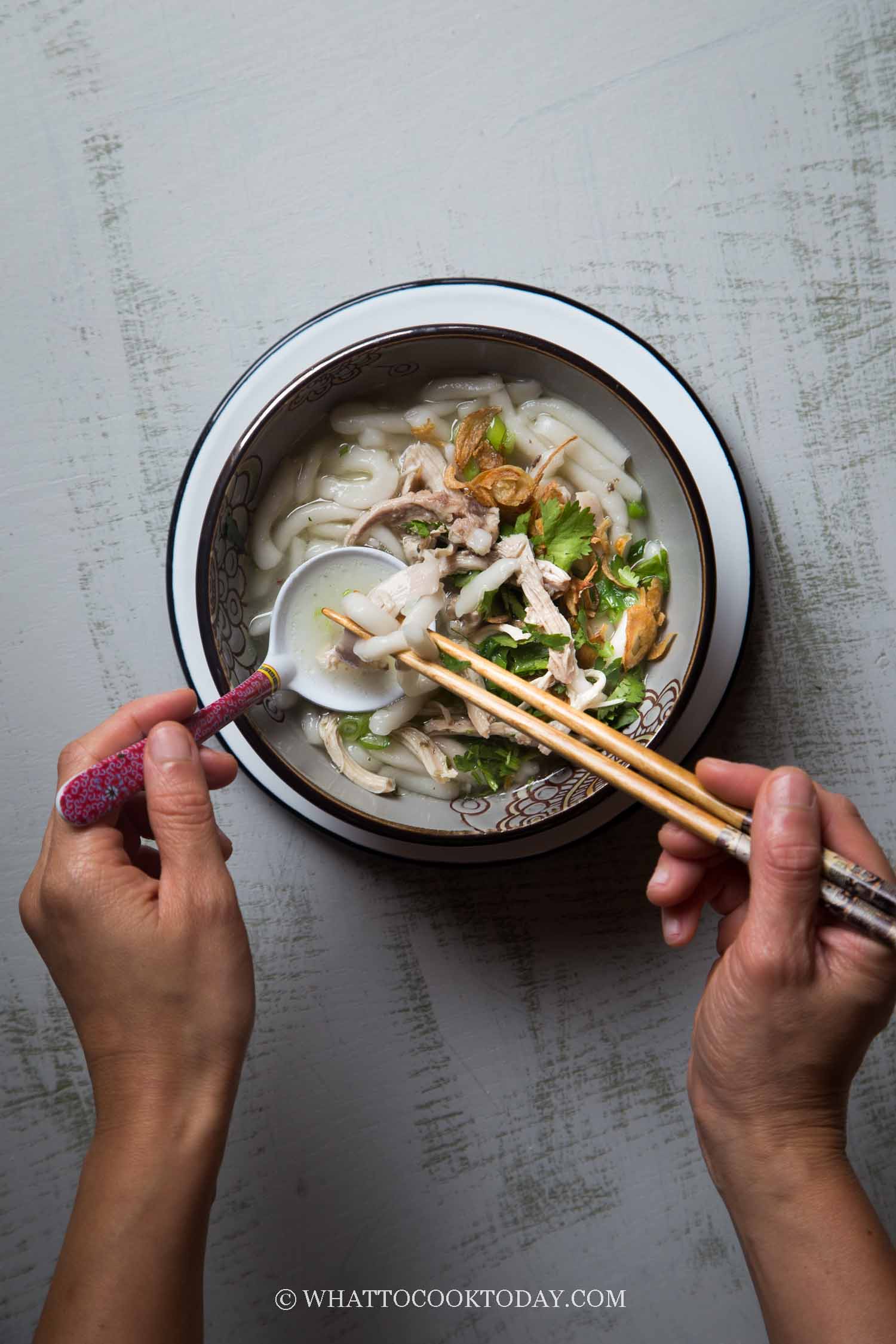
Khao Piak Sen (Lao Tapioca Noodle Chicken Soup)
Ingredients
Tapioca Noodles (Make about 500 gr noodles):
- 130 gr tapioca flour (about 1 cup) plus more for dusting
- 100 gr rice flour (about 2/3 cup)
- 250 ml hot boiling water (about 1 cup)
Chicken Broth:
- 6 cups chicken bone broth homemade or store-bought
- 4 boneless skinless chicken thighs about 2 lbs, or use chicken breast if you like
Aromatics:
- 1 large onion papery skin removed
- 1 large lemongrass stalk trim off woody ends and bruise with heavy object or use 3 Tbsp lemongrass powder
- 2 inches galangal root (thinly sliced) or use 1 Tbsp galangal powder
- 2 inches fresh ginger thinly sliced
- 4 kaffir lime leaves tear edges to release flavor
Seasonings:
- 1 Tbsp Better than bouillon or use 1 cube of chicken bouillon
- 2 Tbsp fish sauce or more to taste
- 1 tsp sugar
- Salt to taste
Garnishes:
- green onion finely chopped
- Crispy fried shallots / bawang goreng
- cilantro leaves
Instructions
Prepare chicken broth:
- Remove papery skin from the onion. Char the onion on the stove until they are lightly charred all over
- Place the chicken broth in a large pot and bring to a boil. Add aromatics, chicken, and seasonings. Bring back to a boil and then lower the heat to let it gently simmer for the next 30 minutes or until the chicken are cooked through. Remove the chicken to a plate and let them cool down. Strain the stock and discard the solids
- Adjust the taste of the broth by adding more fish sauce and/or sugar or salt as needed to your preference
- When the chicken are cool enough to handle, shred the meat. Cover and set aside
Make tapioca noodles:
- Make sure you boil at least 300 ml ( 1 1/4 cups) of water. Make sure the water is rolling boil. This is important or your noodle won't turn out right
- Place both types of flour in a large mixing bowl. If you have a stand mixer with dough hook attachment, use this. Pour in the boiling water and knead it. The mixture won't come together just yet. You may need to scrap the side of the mixing bowl halfway. It will continue to form a smooth non-sticky dough. If it's too wet, add a bit more tapioca flour, if it's too dry, add a bit more hot water
- Dust your working surface with tapioca flour. Roll the dough out into about 1/4 inch thick. You can use a knife to cut the noodle, but I find that using pizza cutter is way faster and easier. The noodle has kinda square shape, so cut the noodle about 1/4-inch in width too
Serving:
- If you plan to cook portion by portion, get a medium saucepan and pour about 2 cups of broth into the saucepan for 1 portion. Otherwise you can bring a large pot of broth you prepared earlier to a boil. Add uncooked tapioca noodles and cook until the noodles turn slightly translucent and float to the top, about 1 minute or less. Don't stir the noodles too much or they will break. The broth will be slightly gooey (because of the tapioca starch). Transfer to serving bowl and proceed to the serving step
- Top with shredded chicken. Garnish with green onions, cilantro leaves, and some fried shallots crisp. Serve immediately


8 comments
Can you store cooked noodles in the fridge for later?
Hi Angie, yes you can store the cooked noodles in the fridge. They will tend to harden once they are refrigerated, but simply reheat them again in hot boiling water very briefly and they will be soft again. I hope this helps.
I’m sitting in a Thai/Lao restaurant googled “Is Khao Piek Sen Gluten Free” and I landed on this website! By looking at the ingredients I realized it is! But let me just say your website is beautiful, and inspiring. I wanted to know what camera you use for your pictures!
Hi Bre,
I’m glad you landed here 🙂 I love Khao Piek Sen and great that it’s naturally gluten free too. I’m using Canon 6D for my photos 🙂
What is 130 grams and 100 grams in measuring cups and measuring spoons? I don’t know how to convert it.
Hi Mai, I’ve added the cups measurements for the flours. Hope that helps!
Made the noodle recipe tonight and it was awesome! I love my pasta al dente and love my ka piek noodles nice and chewy. I’ve been looking for a recipe to make smaller portions. Most recipes call for using the whole bag for both flours and I end up not eating all of the noodles since it’s just me. The ratio is just perfect for my chewy noodle craving! Thanks for posting!
Hi Olivia,
I’m so glad to hear you like it and the ratio worked great for you 🙂 Thank you so much for letting me know!